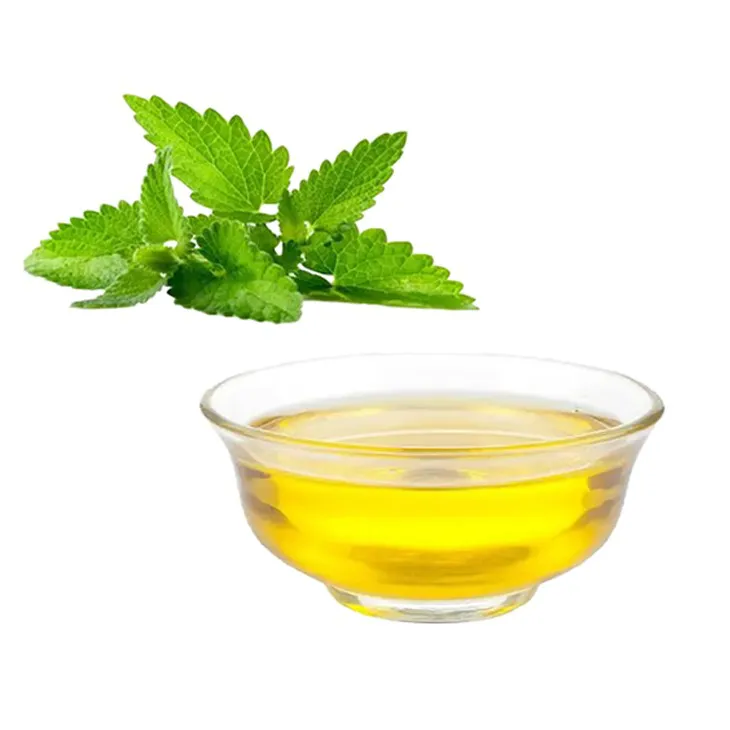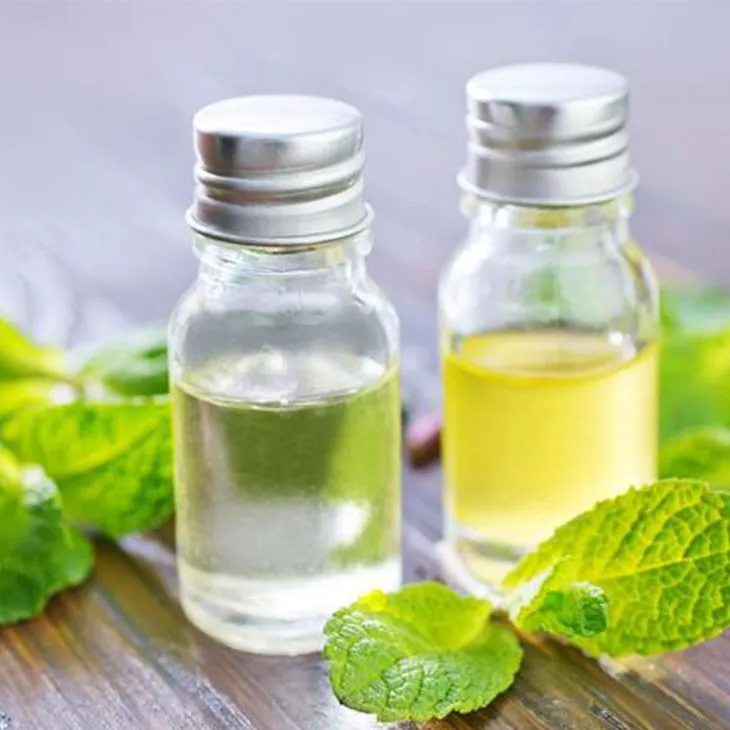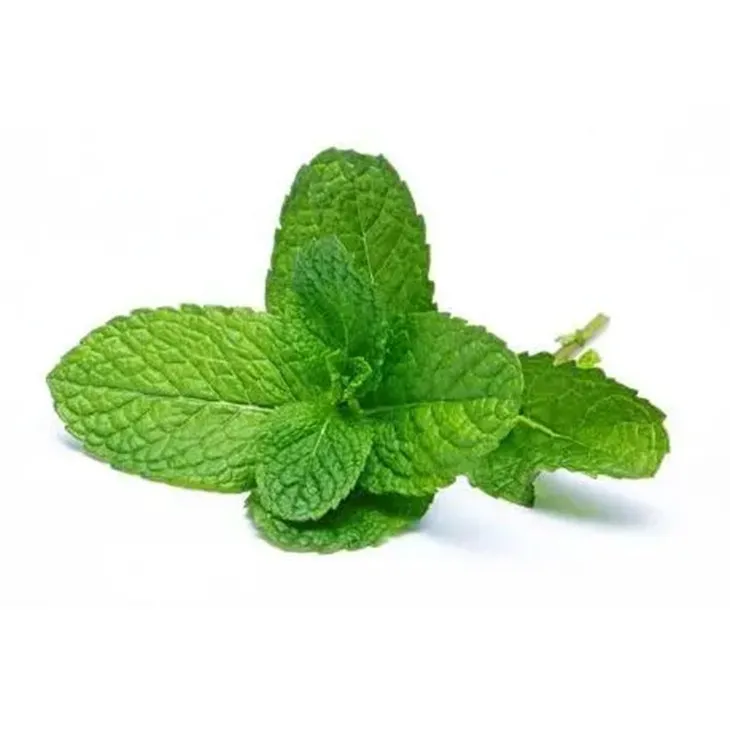- 0086-571-85302990
- sales@greenskybio.com
Peppermint Oil: China vs. the United States.
2024-11-28

1. Introduction
Mint oil, a precious essential oil, is widely recognized for its various applications. It has unique characteristics and development paths in different countries. China and the United States, two major players in the global market, both have their own contributions to the mint oil industry. This article will explore the differences and similarities of mint oil in these two countries in terms of production, applications, and market influence.

2. Mint Oil in China
2.1 History and Cultivation
In China, mint oil has a long - standing history in traditional medicine and food flavoring. The cultivation of mint plants in China has a large scale. Mint is grown in suitable regions across the country. These regions usually have favorable climate and soil conditions for mint growth. For example, some areas in Jiangsu province are well - known for their mint cultivation. The large - scale cultivation provides a stable raw material source for mint oil production.
2.2 Applications in Traditional Chinese Medicine
Mint oil is often used in traditional Chinese medicine. It is highly valued for its cooling and soothing properties. In traditional Chinese medicine theory, mint is considered to have the function of dispersing wind - heat. It can be used to treat some symptoms related to heat in the body, such as headache, sore throat, and red eyes. Doctors may use mint - related prescriptions or preparations containing mint oil to relieve patients' discomfort.
2.3 Applications in the Food Industry
In the Chinese food industry, mint oil adds a refreshing flavor to a variety of products.
- Candies: Mint - flavored candies are very popular in China. The cool and fresh taste of mint oil makes the candies a favorite among consumers, especially in summer when people prefer something cool.
- Teas: Many traditional Chinese teas, such as jasmine tea, sometimes incorporate a touch of mint oil. This combination not only enriches the flavor of the tea but also gives a refreshing feeling during drinking.
- Traditional Snacks: Some traditional Chinese snacks also use mint oil as a flavoring agent. It can make the snacks more appealing and add a unique taste.

3. Mint Oil in the United States
3.1 High - Tech Extraction Methods
The United States focuses on high - tech extraction methods for mint oil production. These advanced methods ensure the purity and quality of mint oil. High - tech extraction equipment and techniques are used to extract mint oil from mint plants more efficiently. For example, some extraction methods can precisely separate the active components of mint oil while minimizing the interference of impurities. This results in a high - quality mint oil product that meets the strict requirements of various industries.
3.2 Applications in the Cosmetic Industry
American - produced mint oil has a wide range of applications in the cosmetic industry.
- Toothpaste: Mint oil is a common ingredient in toothpaste. Its pleasant smell can effectively cover up bad breath, and at the same time, it gives a cool feeling during brushing, which makes people feel fresh.
- Mouthwash: In mouthwash products, mint oil not only provides a refreshing taste but also has potential antibacterial properties. It can help keep the oral cavity clean and reduce the growth of bacteria.
- Skincare Items: Mint oil is also used in some skincare products. It can give a cool and soothing feeling on the skin, especially for products designed for oily or acne - prone skin. The refreshing effect of mint oil can make the skin feel more comfortable.
3.3 Applications in the Pharmaceutical Industry
In the pharmaceutical industry in the United States, mint oil also plays an important role. Due to its potential antibacterial properties, it can be used in some pharmaceutical preparations. For example, it may be included in some topical medications for skin infections. The pleasant smell of mint oil can also make the use of these medications more acceptable to patients.

4. Comparison between China and the United States
4.1 Production Methods
China mainly relies on large - scale cultivation to ensure the quantity of mint oil production. The traditional cultivation and extraction methods are relatively stable and suitable for the large - scale production of mint oil for traditional medicine and food industries. In contrast, the United States emphasizes high - tech extraction methods, aiming at high - quality and pure mint oil products. These methods are more in line with the high - standard requirements of the cosmetic and pharmaceutical industries in the United States.
4.2 Application Areas
The application areas of mint oil in China and the United States also show some differences. In China, it is more focused on traditional medicine and food industries. While in the United States, it has a broader application in the cosmetic and pharmaceutical industries. However, both countries also have some overlapping application areas. For example, in the food and beverage industry, mint oil is used in both countries, although the specific products may vary.
4.3 Market Influence
Both China and the United States contribute to the global mint oil market. China, with its large - scale production, can meet the domestic demand for mint oil in traditional medicine and food industries and also export a certain amount of mint oil products. The United States, with its high - quality mint oil products, has a strong influence in the global cosmetic and pharmaceutical industries. The high - tech production methods in the United States also attract the attention of other countries in the industry, which may promote the development of global mint oil extraction technology.

5. Conclusion
In conclusion, mint oil in China and the United States has its own characteristics. China has a long - standing history of using mint oil in traditional medicine and food, with large - scale cultivation as the basis. The United States focuses on high - tech extraction methods and has a wide range of applications in the cosmetic and pharmaceutical industries. The two countries play important roles in the global mint oil market through their unique production methods and application areas. As the global market continues to develop, there may be more exchanges and cooperation between China and the United States in the mint oil industry, which will further promote the development of the global mint oil industry.
FAQ:
1. What are the main application areas of mint oil in China?
In China, mint oil is mainly used in traditional Chinese medicine for its cooling and soothing properties. Also, in the food industry, it is used to add a refreshing flavor to candies, teas, and various traditional snacks.
2. How does the United States ensure the quality of mint oil?
The United States focuses on high - tech extraction methods to ensure the purity and quality of mint oil.
3. What are the differences in the application of mint oil between China and the United States?
In China, mint oil is often used in traditional medicine and food flavoring. In the United States, it has a wide range of applications in the cosmetic and pharmaceutical industries, such as in toothpaste, mouthwash, and skincare items.
4. What are the advantages of China's mint oil production?
China's mint oil production benefits from large - scale cultivation of mint plants in suitable regions.
5. Why is mint oil popular in both China and the United States?
In China, it has traditional medical and food - flavoring uses. In the United States, its pleasant smell and potential antibacterial properties make it useful in cosmetic and pharmaceutical products, which contributes to its popularity in both countries.
Related literature
- Mint Oil Production and Its Global Market Trends"
- "Comparative Study of Aromatic Oils in China and the United States: Focus on Mint Oil"
- "The Role of Mint Oil in Traditional Chinese Medicine and American Cosmetics"
- ▶ Hesperidin
- ▶ citrus bioflavonoids
- ▶ plant extract
- ▶ lycopene
- ▶ Diosmin
- ▶ Grape seed extract
- ▶ Sea buckthorn Juice Powder
- ▶ Beetroot powder
- ▶ Hops Extract
- ▶ Artichoke Extract
- ▶ Reishi mushroom extract
- ▶ Astaxanthin
- ▶ Green Tea Extract
- ▶ Curcumin Extract
- ▶ Horse Chestnut Extract
- ▶ Other Problems
- ▶ Boswellia Serrata Extract
- ▶ Resveratrol Extract
- ▶ Marigold Extract
- ▶ Grape Leaf Extract
- ▶ blog3
- ▶ blog4
-
Chinese aguaje extract powder manufacturers.
2024-11-28
-
Honeysuckle pollen of the best quality.
2024-11-28
-
Chinese Senna Leaf Extract Suppliers.
2024-11-28
-
Organic Dandelion Root Extract, Australia.
2024-11-28
-
The best bitter gourd extract in 2024.
2024-11-28
-
The best baicalin in nature.
2024-11-28
-
Chinese lily extract manufacturers.
2024-11-28
-
Nature's best β - carotene.
2024-11-28
-
Grape Leaf Extract
2024-11-28
-
Wheat Germ Extract
2024-11-28
-
Ginseng Root Extract
2024-11-28
-
Eucommia Ulmoides Extract
2024-11-28
-
Agaricus Blazei Extract
2024-11-28
-
Purple Sweet Potato Extract
2024-11-28
-
Giant Knotweed Extract
2024-11-28
-
Lemon Balm Extract
2024-11-28
-
Yellow Pine Extract
2024-11-28
-
Lavender Extract
2024-11-28





















